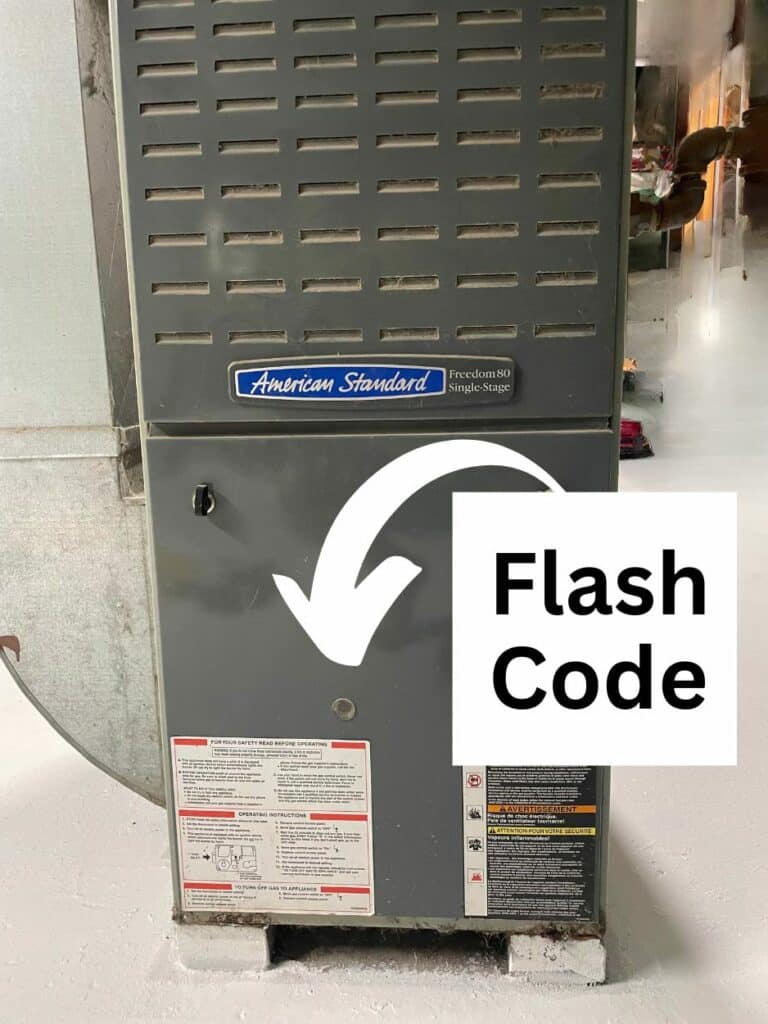As a homeowner, a sense of security and confidence comes with understanding the systems that keep your home comfortable, especially regarding your heating system. American Standard furnaces are renowned for their reliability and efficiency, but like any sophisticated machinery, they can encounter issues. This is where the American Standard furnace codes come into play.
These codes help you quickly identify what’s happening with your furnace, empowering you to take appropriate action.
What is a Furnace Error Code?
Before delving deeper into the specifics of American Standard furnace codes, it’s essential to understand what a furnace error code is. Simply put, a furnace error code is a diagnostic tool your heating system uses to communicate its status. These codes are typically displayed as flashes from an LED light or as a digital readout on newer furnace models. They are the furnace’s saying, “Hey, I need attention for a specific reason.”
Here is how furnaces communicate with codes:
- LED Light Blinks: Many furnaces, like the American Standard models, use blinking lights. The pattern of these blinks (e.g., two blinks, pause, three blinks) corresponds to a specific error code.
- Digital Displays: Some modern furnaces have digital displays that show a numerical or alphanumeric code, making it easier to read and understand the specific issue.
Why bother learning about American Standard furnace codes?
These codes can be the first defense against major furnace problems. They offer early warnings that can prevent small issues from becoming big, costly ones. Knowing these codes also makes conversations with HVAC technicians more productive, as you can accurately describe the problem.
Decoding the American Standard Furnace Codes
American Standard furnaces communicate operational status and issues through LED blinks and patterns. These codes are crucial for homeowners to understand, as they provide valuable insights into the functioning and potential problems of the furnace.

Remember, the number of blinks or the combination of lights is key. So, grab a pen and paper, take a deep breath, and let’s dive in!
Here’s a detailed breakdown of these codes:
- LED Off – No Power: If the LED is off, it indicates no power to the furnace. This could be due to a tripped circuit breaker, a blown fuse, or a disconnect within the furnace’s internal wiring. It’s essential to check the power source and ensure the furnace is properly connected to the power supply.
- LED Flashing Slowly – Normal Operation: A slowly flashing LED is a good sign. It means the furnace is in standby mode and is operating normally. There’s no action required from you in this case, as the furnace is functioning as it should.
- LED Flashing Quickly – Normal Operation, Furnace Should Be Running or Cycling: When the LED flashes quickly, it also signifies normal operation. In this state, the furnace should be actively running or cycling. This rapid flashing indicates that all systems are operational and the furnace responds to your home’s heating demands.
- LED On, Not Flashing – Control Board Problem: If the LED is on but not flashing, it indicates a control board problem. This is a more serious issue, as the control board is the central component that manages the furnace’s operations. In such cases, contacting a professional technician is advisable, as repairing or replacing a control board typically requires technical expertise.
- Two Flashes: This suggests the furnace drops the flame, potentially due to gas supply or flame sensor issues.
- Three Flashes: Points to a problem with the pressure switch, possibly due to blocked ventilation or a malfunctioning switch.
- Four Flashes: Indicates a problem with the limit switch, often related to airflow issues or an overheating furnace.
- Six Flashes: This electrical issue related to polarity or grounding usually requires professional help.
- Seven Flashes: Signals a problem with the gas valve, affecting gas flow to the furnace.
- Nine Flashes: Indicates an issue with the ignition or ignitor circuit.
- 22 Flashes: Suggests a problem with the flame itself.
Understanding these flash codes and their meanings is critical for maintaining the efficiency and safety of your American Standard furnace. Regular maintenance and prompt attention to these codes can help ensure a long life for your furnace, keeping your home warm and comfortable.
Not all American Standard furnaces use the same blinking code language. Some models might have a single red light that remains on continuously to indicate an issue. Some models even show the error code directly on a display panel. Check your manual or look for a small screen near the control panel.
Remember, it’s best to consult with a certified HVAC technician if you ever doubt a code or its implications.
What to Do When You See a Code
- Don’t Panic: Remember, these codes are meant to inform you, not alarm you.
- Check the Code: Refer to your furnace manual or look online for your specific model to understand each code.
- Perform Basic Checks: Sometimes, simple solutions like checking your thermostat settings or replacing a dirty filter can fix the issue.
- Know When to Call a Professional: If the problem seems beyond basic troubleshooting or involves electrical or gas components, it’s safer to call a certified technician.
Regular maintenance is essential to keep your American Standard furnace running smoothly and minimize the appearance of these codes. This includes annual professional check-ups, regular filter changes, and keeping the area around your furnace clean and clear.
Your American Standard furnace is a vital part of your home, and understanding its language through these codes can make a world of difference in maintaining a comfortable and safe living environment. While it might initially seem technical, getting familiar with these codes is a practical step toward proactive home management. Remember, when in doubt, it’s always best to consult with a professional to ensure the longevity and safety of your furnace.






